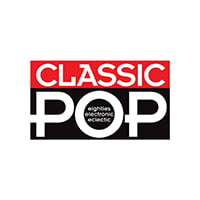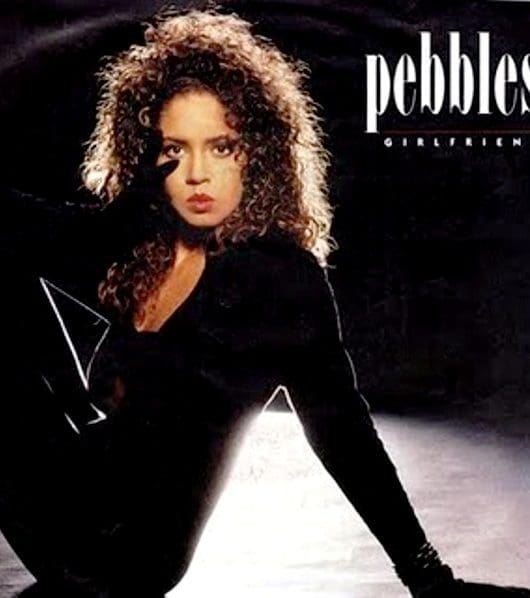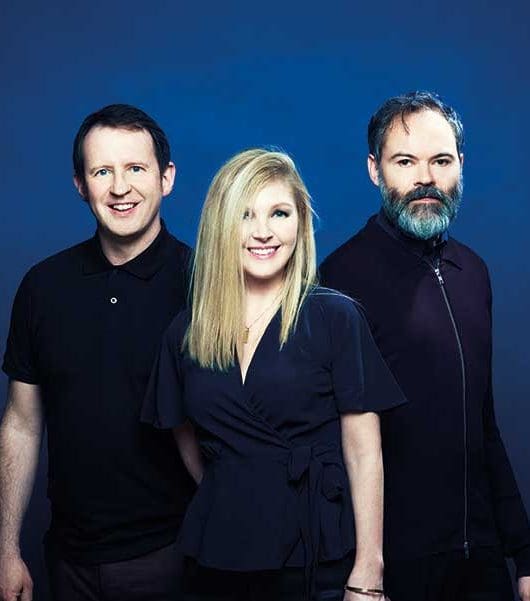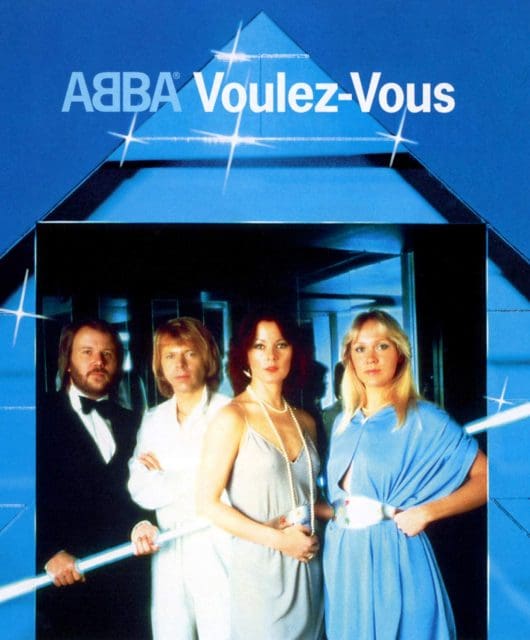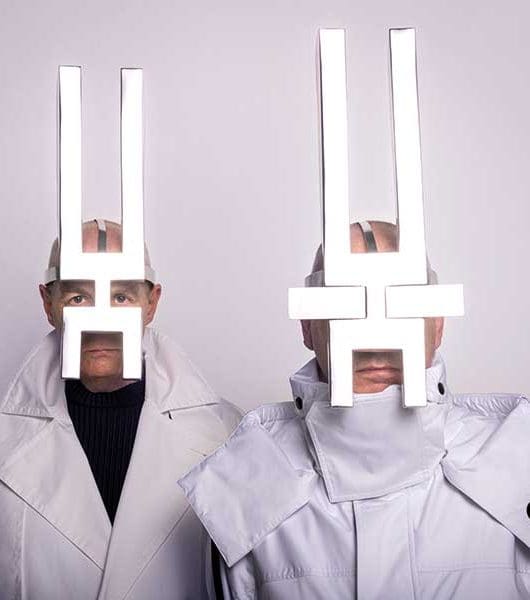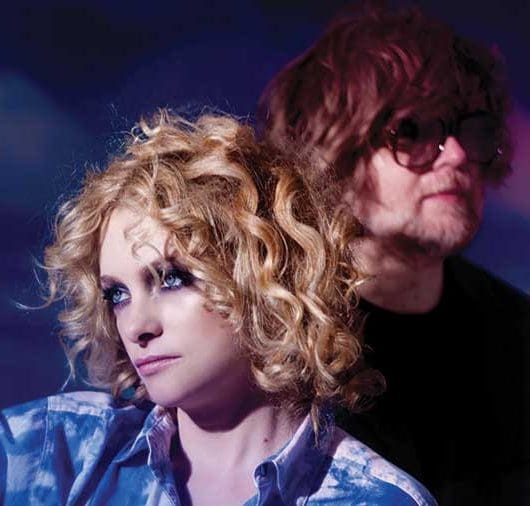Stand by your fan – pop stars and their followers
By Classic Pop | July 28, 2022
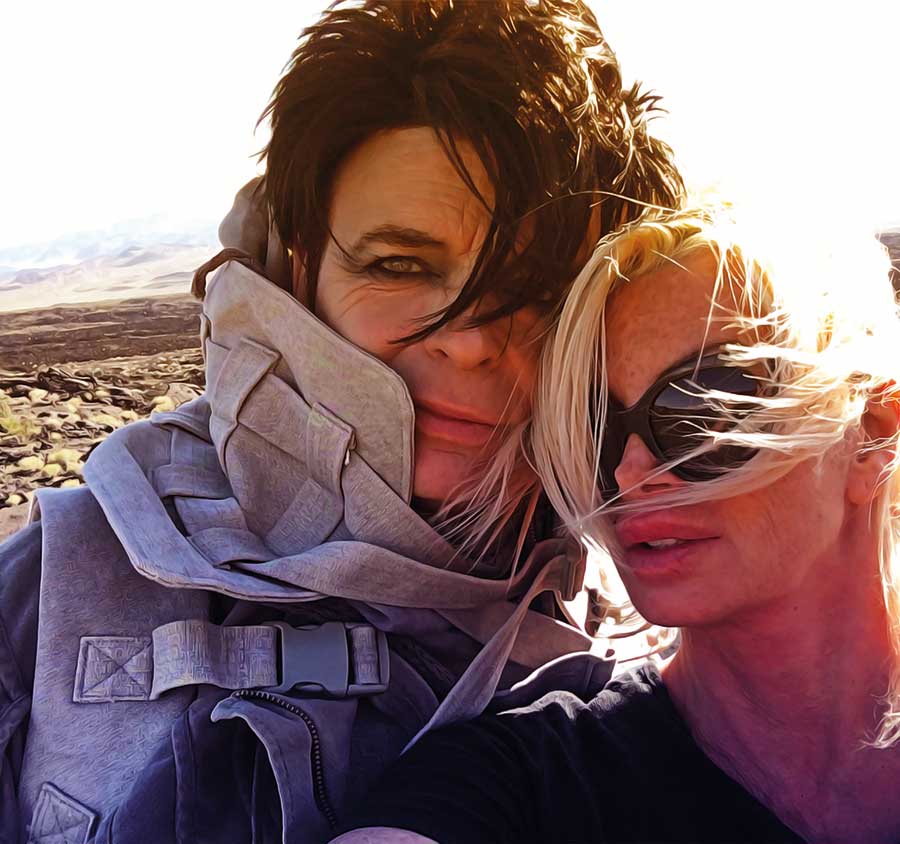
We profile Superfans in every issue of Classic Pop. But what exactly makes them tick? We go behind the phenomenon and meet those whose lives have been altered by their favourite artists, plus Gary Numan tells us why he married one of his biggest admirers… By Laura Williams
Music fans. The lifeblood of the music industry. If fans didn’t buy records, gig tickets, T-shirts, pin badges, all but the wealthiest musicians wouldn’t have the means to make and distribute their work.
They come in all shapes and sizes – from the screaming teenage girl to the meticulous completist collector in his 60s. Some are quiet, modest fans, others are vocal ambassadors for their favourite band. Some fall in and out of love with their band or musician of choice depending on their output, others stick with them through the good, the bad and the ugly. They have nicknames – Brosettes, Blockheads, Thatters – uniforms and special ways of recognising each other.
Where once there was very limited access to your musical heroes, in the social media age many are instantly reachable. And it’s not just the musicians themselves, where you once had to go to a gig or a real-life meet-up to connect with fellow fans, now that, too, is at your fingertips 24/7. But what does being a music fan in the 21st century really mean? Is being a female music fan a different experience to their male counterparts? And has social media been a positive development in this sphere?
From fans of 80s and 90s boybands to Britpop obsessives and one fan who actually married her musical idol (introducing Gemma Webb, wife of Gary Numan), there are familiar tales of music pulling you through the darkest times – of meeting and even duetting with your favourite band, of travelling the world to see your musical heroes and making lifelong friendships in the process.
Dr Mark Duffett, from the University of Chester, has been studying musical fandom for years – exploring relationships between particular kinds of fandom and gender and race. It’s a subject close to his heart. “When I was younger I went through a few phases of being a fan,” he explains. “It began with Howard Jones and progressed onto Heaven 17, then from pop to rock and post-punk.”
Talking about what he has learnt through his ongoing study of musical fans, he says: “We need to conceptually separate celebrity fandom from genre fandom and plain old musical appreciation – though in reality they can all occur together, at the same time. Celebrity fandom, the kind I’m most interested in, occurs when a person reaches a point where they realise they have a connection with a famous performer that they follow; the connection is significant enough to have shaped their identity. There is something highly personal, both overwhelming and empowering, about that moment. It may include all sorts of emotions – appreciation, affection, friendship, lust, grief, anxiety, and other things.”
The fan in black
Gary Numan is the perfect example of a high-profile musician with a dedicated following. His fans matter as much to him as he does to them – hell, he even married one of them. The mutual respect is notable when you speak to the electro-pop pioneer. “When you hear how you’ve helped people in difficult moments, how the music has been a comfort, an inspiration, a treasured memory, a support to lean on, those things are incredibly special,” explains Gary.
Numan clearly does not take his fans, including wife Gemma, for granted. “I’m not too keen on talking about my fanbase as dedicated, or loyal,” he says. “It gives the impression that they stay with you no matter what, good albums or bad. I know painfully well that, for the vast majority of them, that isn’t true.
“My career was all but dead and buried in the early 90s. I had hardly any fans left, in fact. The larger part of the fanbase is more discerning. If they don’t like something then, for the most part, they don’t buy it. It’s that fact which makes my current success all the more satisfying.
“Having said that, there has always been that small hardcore of fans that have bought everything, come to every show, even when I wasn’t at my best. That small group has sometimes been all that stood between me and disaster.”
Dr Duffett recognises these relationships as mutually beneficial. He says: “From Elvis to BTS, stars, fans and critics have all been connected; they have continually formed a constellation in which each part is energised by reacting to the other.”
It’s a notion that frequently comes up in conversations with fans. Samantha Hand, from Reading, was a Suede fan at university but the real obsession came later on when they helped her come to terms with the grief of losing her father. She said: “Suede are my world. They’ve provided the soundtrack to my life through the highs and the lows. Their music runs through my veins to the deepest parts of my soul.
“Their Royal Albert Hall gig in 2010 is my favourite one to date. The energy from the band and the fans that night was unfathomable. Brett had recently lost his dear friend Jesse and you could feel Brett’s pain and the rawness throughout The Next Life and He’s Gone. Feeling that pain whilst dealing with my own – as my father’s death was only a few weeks before – was overwhelming but I felt a sense of comfort through those songs.”
This charming fan
Emily Hyatt featured in a TV documentary about superfans, talking about her love of Radiohead but it is the Manic Street Preachers who are her main passion. After falling for them hard as a teenager in the early 90s, she waned a little, before reconnecting with them when she needed them most. She says: “In 2015, I had a breakdown and the Manics and James [Dean Bradfield] played a pivotal role in getting me through it.”
But it’s not just the musicians themselves who fulfil such a role. One of the main benefits of being a fan is the fellow appreciative folk you connect with.
“Despite my fascination with the link between celebrities and people who are dedicated to them, for almost everyone fandom is essentially a social activity,” explains Dr Duffett. “It is in large part about the bonds that ordinary people form with each other, using the star as a vehicle or alibi for that social interaction.
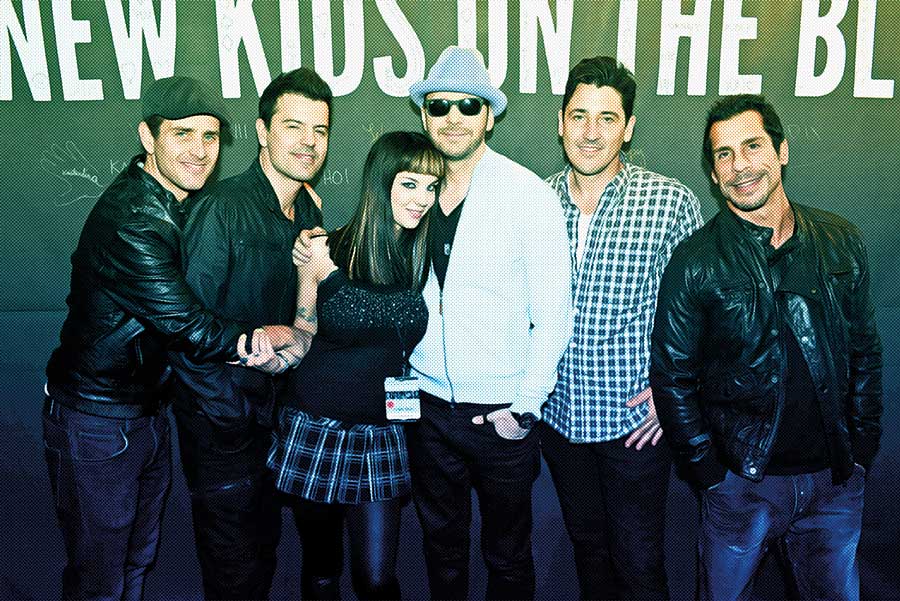
“We can choose to see fans as isolated people who are lost in their obsessions, but it is more accurate and productive to understand them as highly social individuals who are using their interest in particular celebrities as a way to educate themselves, find their own creativity, start political movements, or find other ways to reach out to others.”
Emily agrees: “I’ve met so many incredible people through my love of the Manics,” she says. “I met my best friend in a Manics chatroom back in 1998 and we lived together, went to see the band together. He died recently and we played A Design For Life at his funeral. The Manics were the reason my partner and I got together – a photo I took of James that he liked prompted him to get back in touch after years of lapsed friendship.”
Fandom breaks down the barriers of geography, too. Danielle Fice, from Plymouth, a hardcore Thatter (Take That fan) explains: “I’ve met hundreds of people because of Take That. When my friend and I went to Dubai in 2013, we met a few ladies in the queue – one from Australia, one from Warrington and one from Southampton. We have stayed in touch ever since.”
Lisa Vine, from Poole in Dorset, a self-confessed Blockhead (New Kids On The Block fan), says: “Me and my sister go to all the shows and we have met pretty much all of our closest friends through NKOTB. We also now have the most amazing friends from all over the world.”
Samantha, who administrates the 4,000-strong Insatiable Ones Suede fan group on Facebook, adds: “We – the Insatiable Ones – are outsiders but we have finally found our tribe. I’ve gained true friends who finally understand me. During gigs, Brett sometimes asks if there are any Insatiable Ones in the audience and dedicates a song to us. That still blows my mind. If you’d have told me back in 1993 that in 20-something years that Suede would know who I am, I would have laughed hysterically in disbelief!”
I wanna be your fan
There is a notion that social media is levelling the playing field – giving fans unprecedented access to their idols as well as their tribe of fellow music fans. While many musicians embrace this, others have actively spurned it, choosing to stay away from the noise.
Dr Duffett notes: “Social media is undoubtedly changing the game. It is making the ways that fans relate to stars in all sorts of areas – sport, politics, music – converge. Fans can also quickly share fictional stories, artworks and other forms of creative expression in public that show how much they care. They can easily form their own communities and even acquire fame in their own right within such communities.
“Social media has made a massive difference to being a fan,” Lisa explains. “You can now interact with your favourite band members very easily no matter where you are based in the world.”
Numan looks after his own Facebook, Twitter and Instagram accounts and says: “Social media is the most important vehicle in how I interact with the fans, and has been for several years. But, I feel the need for a discrete distance, that comes more from the fans than from me. I think fans, some of them anyway, like to hold on to a small degree of mystery around the people that they follow.”
I’m waiting for the fan
There are many stories of fans getting once in a lifetime opportunities thanks to social media – from stars turning up to surprise brides on their wedding days to fans being invited to join their favourite musicians on stage or at special meet-and-greets.
Lisa has travelled the world to see her favourite band play live, including attending half a dozen NKOTB cruises – the first of which she was lucky enough to sing a duet on stage with singer Joey McIntyre. She explains: “Joey asked fans who were booked on the cruise to send in videos of them singing and he would choose a few fans to duet with him. We sang Time After Time – incredible.”
Similarly, Danielle had a dream come true when she got to sing on stage with Take That’s Gary Barlow. “I was picked to go on stage and have Gary sing to me on his last tour. He heard my voice when I was sat on his lap and he pushed the mic over to me. It was a dream come true.”
Danielle, who has been to more than 100 Take That gigs, has taken her fandom to extreme lengths, even getting a Take That tattoo.
“I had them sign my back and had it tattooed over,” she said. It’s a similar story for Emily, who has numerous Manics’ tattoos, including one of frontman James Dean Bradfield’s face on her leg.
Samantha, who has travelled all over Europe to see Suede play live paid her own tribute to the band she loves by naming her son Brett, after the Suede singer. She said: “My eldest son is called Brett. He knows why he’s called Brett. My son has met Brett three times now and first saw Suede live when he was five years old, at Latitude Festival.”
“Every genre includes a stereotype of its own typical fans,” says Dr Duffett. “Gender has somewhat shaped people’s approaches to fandom. Historically, the idea of being a fan has been freighted with stereotypes that connect it to expected aspects of traditional femininity. Take fan screaming, for example; it is hard to scream if you are a man, at least a mature, heterosexual man, because ‘real men’ are not licensed to do that by society. Women have often created communal support for each other through fan networks, while male fans have focused on building and displaying their expertise.”
Numan concludes: “Fans that let you in to their lives but without becoming too obsessed, those are the ones I like the most. Fans that worship the ground you walk on are a bit too much. It gives too much importance to people like me, who are no better than anyone else.”
Dr Duffett echoes this, adding: “Stardom is a role, not a person, and it is a role that is mutually endorsed by fans and stars. At the end of the day, it’s great to appreciate others’ gifts and creativity, but you are as special as any star and they are as ordinary as you; everyone is a walking miracle.”
LOVE AT FIRST SIGHT
Followers of Take That, Suede, the Manics and New Kids on the Block tell Classic Pop how they went from fans to superfans…
Lisa Vine – New Kids On The Block
 “I first became aware of NKOTB when I was about seven years old. My sister, Rhea (who is two years older than me), and her best friend at the time loved them which got me into them in a big way, too. It didn’t take long before I was completely hooked and had posters all over my walls from Smash Hits magazine; and, of course, I was convinced I was going to marry one of them. I was too young to see them the first time around – they split up in 1994 and reformed again in 2008 – and I didn’t actually get to see them live in concert until 2012 when they did a UK tour with Backstreet Boys (NKOTBSB). This was also the first time I got to meet the band in person, as they offer meet-and-greet packages at all of their shows. After that show, I was completely hooked again on the band that was my first love.”
“I first became aware of NKOTB when I was about seven years old. My sister, Rhea (who is two years older than me), and her best friend at the time loved them which got me into them in a big way, too. It didn’t take long before I was completely hooked and had posters all over my walls from Smash Hits magazine; and, of course, I was convinced I was going to marry one of them. I was too young to see them the first time around – they split up in 1994 and reformed again in 2008 – and I didn’t actually get to see them live in concert until 2012 when they did a UK tour with Backstreet Boys (NKOTBSB). This was also the first time I got to meet the band in person, as they offer meet-and-greet packages at all of their shows. After that show, I was completely hooked again on the band that was my first love.”
Samantha Hand – Suede
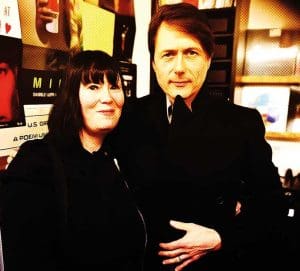 “Back in 1993 while at university, I joined the Britannia Music Club. It was basically a way to buy cassettes at a discounted price by mail order and discover new music. Suede’s debut album was one of the first records I bought through it. In 1994, I was in a student nightclub and a Suede song began playing, its effect was so powerful that I froze until it had finished, then I ran to the DJ booth and asked which track it was. The next morning, as the hangover wore off, I couldn’t remember the name of the song but I knew it was Suede, so I headed to my local record shop; I asked for every single by Suede, took the CDs to the listening post and played each one until I heard the opening bars of Killing Of A Flashboy. From that point I went from liking Suede to falling in love with them and that’s where my obsession began. It really was a life-changing moment.”
“Back in 1993 while at university, I joined the Britannia Music Club. It was basically a way to buy cassettes at a discounted price by mail order and discover new music. Suede’s debut album was one of the first records I bought through it. In 1994, I was in a student nightclub and a Suede song began playing, its effect was so powerful that I froze until it had finished, then I ran to the DJ booth and asked which track it was. The next morning, as the hangover wore off, I couldn’t remember the name of the song but I knew it was Suede, so I headed to my local record shop; I asked for every single by Suede, took the CDs to the listening post and played each one until I heard the opening bars of Killing Of A Flashboy. From that point I went from liking Suede to falling in love with them and that’s where my obsession began. It really was a life-changing moment.”
Emily Hyatt – Manic Street Preachers
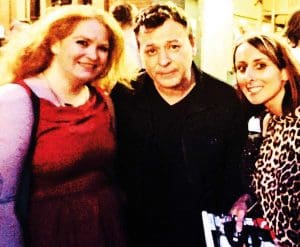 “I initially got into them at the end of 1995 after reading an interview with Nicky and Richey. It featured the stunning photos of the two of them glammed up, taken by Kevin Cummins. It was love at first sight and I had to know more. I went straight out to HMV and bought the first thing I could find by them – the She Is Suffering CD single.
“I initially got into them at the end of 1995 after reading an interview with Nicky and Richey. It featured the stunning photos of the two of them glammed up, taken by Kevin Cummins. It was love at first sight and I had to know more. I went straight out to HMV and bought the first thing I could find by them – the She Is Suffering CD single.
I loved it, so The Holy Bible followed and then I picked some Gold Against The Soul-era vinyl up from a car boot sale and I was well away. I loved them for years and then career, alcoholism and a bit of a rubbish relationship saw me stop listening to music and going to gigs. My best friend and I decided to book to see them on their Holy Bible 20 Tour in Manchester in 2014. I’d just quit drinking by then and was looking for something in my life and the second I saw James walk on stage I knew what it was. I fell back in love with them. Hard.”
Danielle Fice – Take That
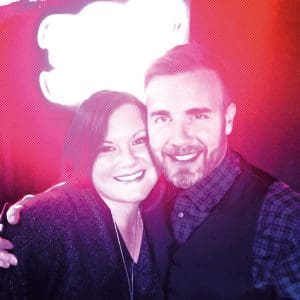 “I was 10 or 11 years old and already loved NKOTB, but then Take That came along and that was it. I had to have everything of theirs. I was so young, so had to rely on my parents for getting me stuff. My first Take That gig was in Chelmsford, Essex, in 1993. We got the coach up, me, my mum and two of my friends. It was outdoors in a big field. I would have been 12. We found a spot to sit, but once it started we left my mum with the bags and coats and made our way closer to the front; my friends were slowing me down, I had to be closer – and fast – so I ditched them and ducked and swooped till I was about 10m from the front. Robbie was singing a slow version of Could It Be Magic and I just cried my eyes out.”
“I was 10 or 11 years old and already loved NKOTB, but then Take That came along and that was it. I had to have everything of theirs. I was so young, so had to rely on my parents for getting me stuff. My first Take That gig was in Chelmsford, Essex, in 1993. We got the coach up, me, my mum and two of my friends. It was outdoors in a big field. I would have been 12. We found a spot to sit, but once it started we left my mum with the bags and coats and made our way closer to the front; my friends were slowing me down, I had to be closer – and fast – so I ditched them and ducked and swooped till I was about 10m from the front. Robbie was singing a slow version of Could It Be Magic and I just cried my eyes out.”
WHEN GARY MET GEMMA
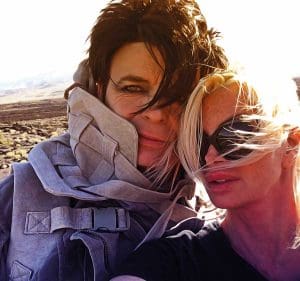 “I met her many times after gigs,” explains Gary Numan. “She would come to the stage door after the shows, get something signed and then go home. I knew her name but that was all. The first time I met her properly, actually had a long conversation, was in late 1991. She hadn’t been to many gigs on that tour and when she came to ask for her autograph I mentioned that, and we started to talk. Her mother was terminally ill and she had been staying at the hospital with her. A few months later I heard that, sadly, her mother had died. I called her up and invited her to come with me on a promo trip somewhere and that was pretty much it. Gemma has made a huge impression on me. She really is quite unique. I have met thousands of people and yet I’ve never met anyone like her. We’ve been together 27 years and I still miss her when she goes to the shops.”
“I met her many times after gigs,” explains Gary Numan. “She would come to the stage door after the shows, get something signed and then go home. I knew her name but that was all. The first time I met her properly, actually had a long conversation, was in late 1991. She hadn’t been to many gigs on that tour and when she came to ask for her autograph I mentioned that, and we started to talk. Her mother was terminally ill and she had been staying at the hospital with her. A few months later I heard that, sadly, her mother had died. I called her up and invited her to come with me on a promo trip somewhere and that was pretty much it. Gemma has made a huge impression on me. She really is quite unique. I have met thousands of people and yet I’ve never met anyone like her. We’ve been together 27 years and I still miss her when she goes to the shops.”
Want more from Classic Pop magazine? Get a free digital issue when you sign up to our newsletter!
